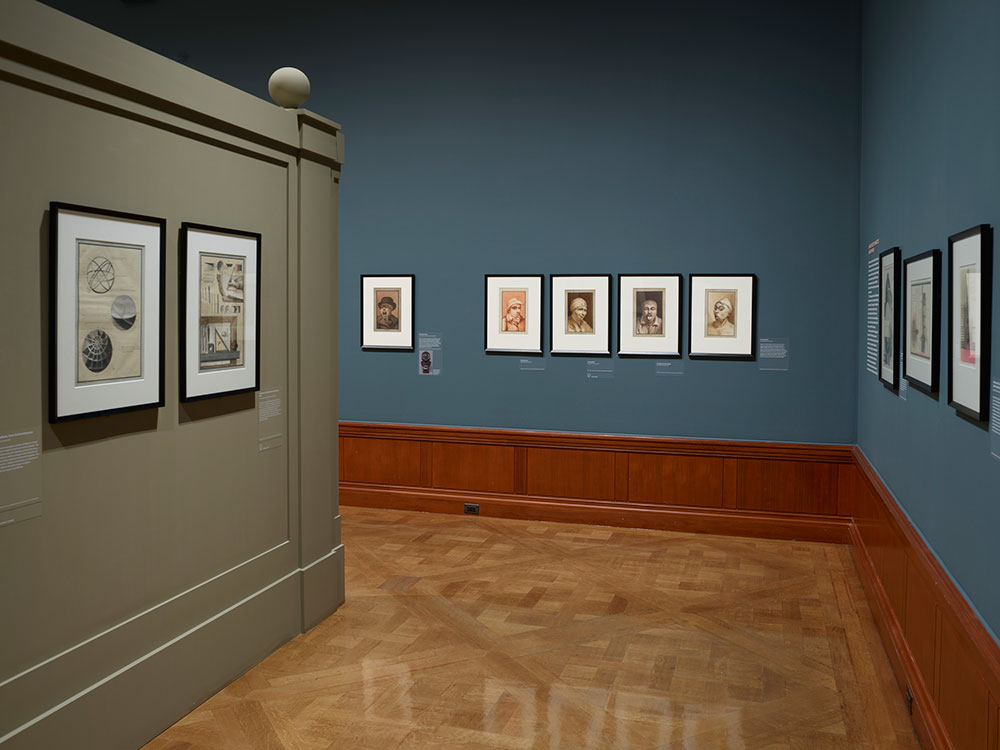Lequeu’s donation to the Royal Library reveals his desire for recognition: it included notes for an autobiography, letters, newspaper articles, instructional essays and manuals, and a significant cache of self-portraits. He restricted the display of his 1792 self-portrait (shown nearby) until 1850. This focus on controlling the spread of his work indicates a concern for his legacy, which consisted largely of his drawings.
Spanning the range of his career, Lequeu’s self-portraits give a sense of the artist as an individual, one whose adaptability served him well during an era of political upheaval. Lequeu offered portrayals of himself as an intellectual, formally posed among his books, and as a citizen, informally attired and in profile. He also used himself as a model for a series of physiognomic studies exploring comic and dramatic expressions of emotion. These works underscore Lequeu’s complex persona and hint at the broad range of his interests, which extended far beyond inventive architectural designs.

